Succulents, also called fleshy plants, have become very popular in recent years, and for good reasons. They are not only attractive with their varied shapes and bright colours, but also very easy to care for. However, for them to thrive, start by planting them correctly in pots. In this guide, we will explain step by step how to successfully plant and care for your potted succulents.
Choosing the right succulents
When choosing succulents to plant in pots, it is important to select varieties that suit this type of growing.
Indoor succulents
Some succulents are particularly suitable for growing indoors, where they can thrive with indirect light and moderate watering. Here are some examples:
- Aloe vera : Plant known for medicinal properties, easy to care for and preferring indirect light.
- Echeveria : Very decorative with its rosette-shaped leaves, ideal for bright windowsills but not direct sun.
- Haworthia : Succulent with leaves arranged in a rosette. Tolerates low light well and needs moderate watering.
- Crassula : Known as jade plant, requires little water and prefers indirect light.
- Sansevieria trifasciata : Also called mother-in-law's tongue, tolerates low light and occasional watering.
Succulents such as Aloe, Echeveria and Crassula are especially recommended for beginners.
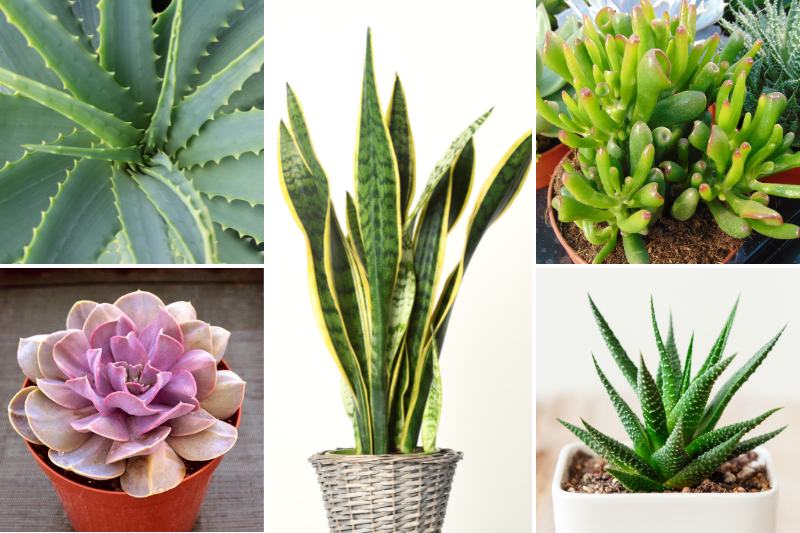
Outdoor succulents
Some succulents are better suited to outdoor growing, where they can enjoy full sun and good air circulation. Growing them in pots allows you to shelter them over winter in cold regions. Here are some examples:
- Sedum (stonecrop) : Ideal for rockeries and containers, with colourful flowers depending on variety. Tolerates sun well. Some varieties are very frost-hardy.
- Sempervivum (houseleek) : Pretty coloured rosettes. Very cold-hardy and perfect for full sun.
- Agave : Majestic with its large leaves, tolerates heat well and requires little water.
- Euphorbia : Enjoys full sun. Valued for decorative foliage and flowering.
- Delosperma : Small plant that produces bright flowers, tolerates drought and full sun.
Remember: a potted plant is always more frost-tender than a plant grown in the ground.

Planting succulents in pots
Materials needed
- A pot : Choose a pot with drainage holes to prevent water from stagnating. Terracotta pots are ideal, as they allow better evaporation. For a plant comfortable in its roots, the pot should be slightly larger than the rootball at purchase.
- Special succulent compost : Use a well-draining potting mix for succulents or cacti, or a mix of potting compost, coarse sand and garden soil.
- Drainage material : Stones, clay pebbles or pottery shards to place at the bottom of the pot to improve drainage.
- Spray bottle : Useful for lightly moistening the compost after planting.
- Gardening gloves : To protect your hands when handling plants (some can be a little spiky) and compost.
Steps for successful planting
1- Place a layer of clay pebbles or pottery shards at the bottom of the pot. This will prevent water from stagnating and protect roots from rot.
2- Fill the pot with special succulent compost, leaving enough space for the plant.
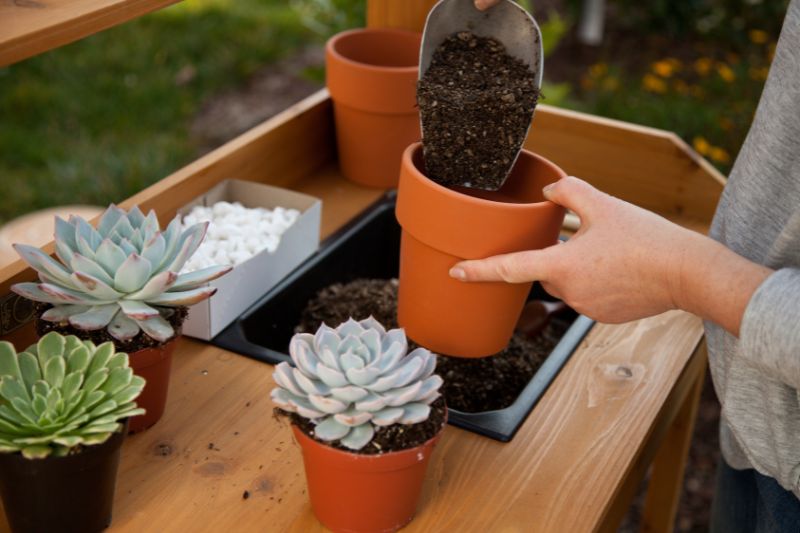
3- Place the succulent in the pot, ensuring the base of the plant sits slightly below the top of the pot.
Ingrid's tip: Succulents can be very delicate and fragile. Wrap the foliage in newspaper to handle them without causing damage.
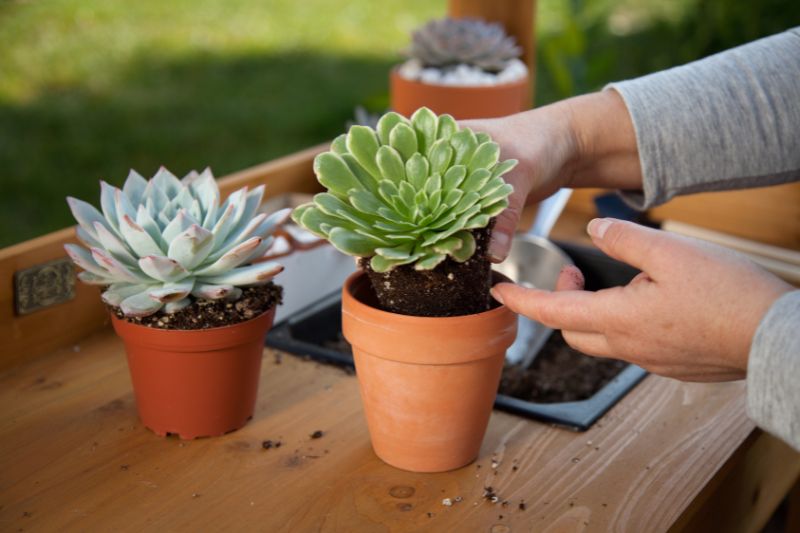
4- Once succulents are in place, add compost around the rootball and press down lightly to stabilise the plants. Avoid over-compacting the compost to allow good air circulation.
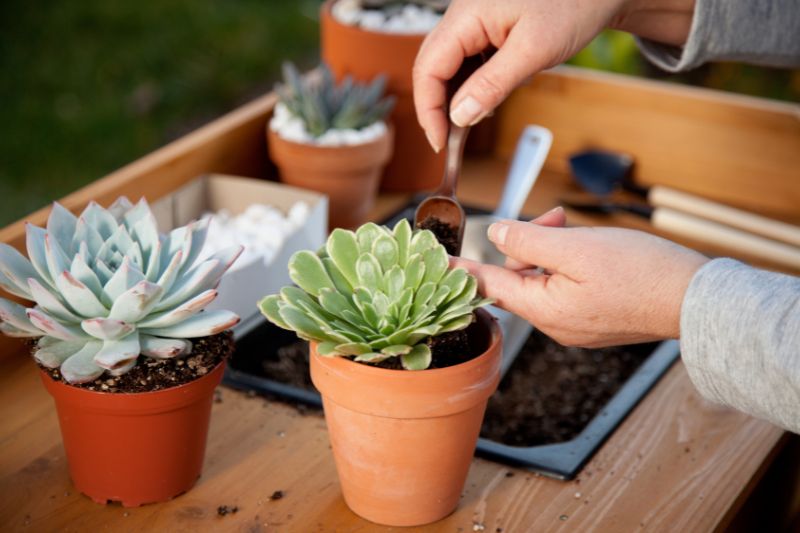
5- Water lightly the succulents after planting. Use a spray bottle to moisten the compost without soaking it.
Watering and care
- After the first watering, wait until the compost is completely dry before watering again. This can vary between one and two weeks depending on ambient humidity and temperature.
- For indoor plants, place pots where they will receive plenty of light, but indirect. For example, near an east- or west-facing window or behind a sheer curtain on a south-facing window.
- Outdoor succulents generally tolerate full sun or partial shade for some varieties.
- In winter, in cold regions, bring outdoor succulents indoors to protect them from frost if necessary.
Watering frequency by season
- Summer : Water your succulents about once a week, depending on how dry the compost is and the heat.
- Winter : Reduce watering to about once a month or less, as succulents enter a period of dormancy and require less water.
Fertilising and repotting
- Feed succulents once or twice a year, in spring and summer, with a fertiliser specific to cacti and succulents.
- Repot succulents every two to three years, or when roots become too crowded in the pot. Use a slightly larger pot and replace the compost.
Tips to avoid diseases and pests
- Avoid excess moisture, which favours fungal diseases.
- Check your succulents regularly for signs of pests such as mealybugs or aphids.
- If succulents show yellowing leaves or signs of rot, reduce watering and improve drainage. If roots are rotting, allow the plant to dry out and repot into dry compost.































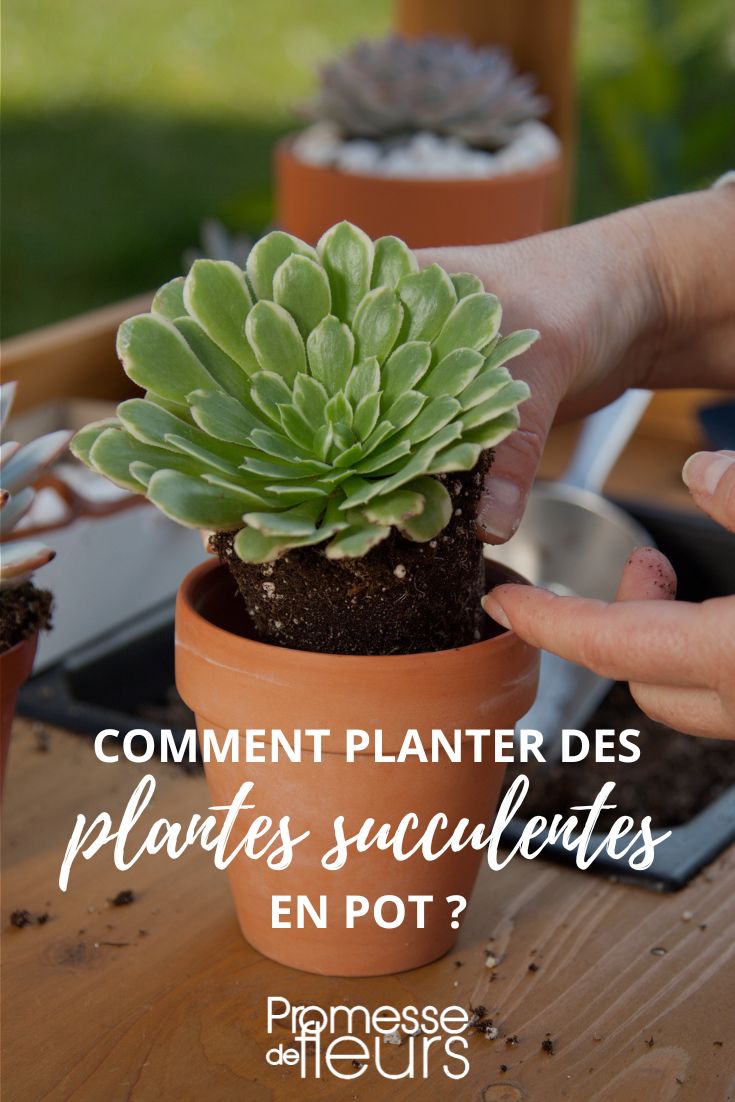
Comments